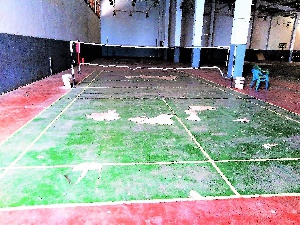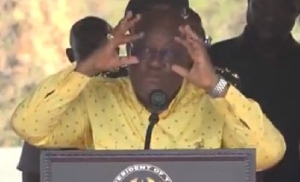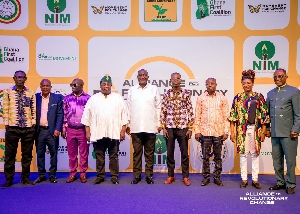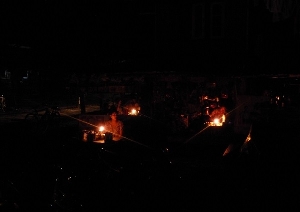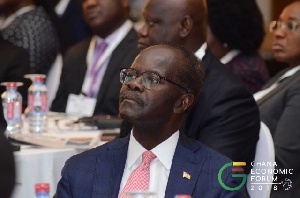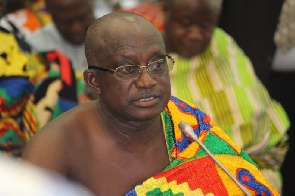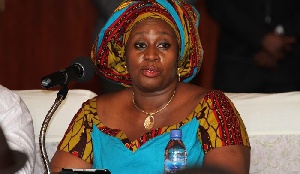Since Ghana’s independence in 1957, no single human field of endeavour in the country’s development agenda had arguably brought much fame and also drawn global attention to than sports.
The awesome manner in which the Senior National Team, the Black Stars, dazzled the world with their sublime skills, courage, and winning mentality in the 2006 and 2010 FIFA World Cup championships are still fresh in the minds of many football loving fans.
What about the 1991 and 1995 Under-17 FIFA World Cup victories by the Black Starlets, as well as the memorable Under-20 FIFA World Cup feat by the Black Satellites in 2009?
On the lesser-developed sporting disciplines such as boxing, mention could be made at the international stage of the exploits of the legendary Azumah Nelson, a Boxing Hall of Famer, Ike ‘Bazooka’ Quartey, former Welterweight title holder, amongst others.
That football and other sporting disciplines had given the expected mileage to Ghana in terms of brand, thereby attracting investors and tourists to the country would be an understatement.
According to the Ghana Statistical Services, the contribution of sports and recreation to the country’s Gross Domestic Product (GDP) in 2017, was estimated at 3.7 percent.
Given the country’s huge potential and prospects in sports, it is worth-noting the investments made over the years by successive governments in building sports infrastructure across the country.
The construction of Youth Resource Centres, comprising football pitches, courts for handball games and other ancillary facilities at least in each of the 16 Regions, with the aim to unearth the inherent talents in the youth is the way to go.
The Nana Akufo-Addo-led Administration, therefore, deserves commendation for the bold initiative to diversify the local economy through sports infrastructural development.
However, as to whether or not the country could realize its objectives vis-à-vis the poor maintenance culture of the people is an issue worth discussing.
President Nana Addo Dankwa Akufo-Addo, in a recent visit to inspect finishing works on the 5, 000 seating-capacity Nyinahin Youth Resource Centre in the Atwima-Mponua District of the Ashanti Region, re-echoed the need for the nation to uphold good maintenance culture.
Indeed, an attitudinal change is required to ensure value for money in terms of sports-related projects given the huge losses incurred over the years by the country in the maintenance of development infrastructure.
Undoubtedly, the sporting sector is fast establishing itself as an important component of socio-economic development globally.
The 2030 Agenda for Sustainable Development, for instance, acknowledges sport as an important enabler of sustainable development, recognizing the growing contribution of sport to the realization of development and peace in its promotion of tolerance and respect and the contributions that it makes to the Sustainable Development Goals (SDGs).
This was emphasized in paragraph 37 of the Political Declaration contained in Resolution 70/1 entitled, “Transforming our World: the 2030 Agenda for Sustainable Development”, where the UN Member States at the highest level recognized that “sport is also an important enabler of sustainable development.”
It espouses “the growing contribution of sport to the realization of development and peace in its promotion of tolerance and respect and the contributions it makes to the empowerment of women and of young people, individuals, and communities as well as to health, education, and social inclusion objectives.”
Sadly, the lack of maintenance culture as pertained to Ghana’s sporting infrastructure threatens the sustainable development of one of the country’s potential sectors.
The vision by the government to create jobs and wealth for the people using sports could be defeated without the right attitude on the part of authorities and citizenry alike.
A typical case study is the Kumasi Youth Centre, located at Ahinsan-Estate in the Asokwa Municipality of the Ashanti Region, a multipurpose sporting and youth development facility, which is currently in ruins.
The Centre, which was jointly financed by the governments of Ghana and China as a social centre for particularly the youth, was completed and inaugurated by former President John Agyekum Kufuor in 2008.
He was assisted then by the Chinese Ambassador to Ghana, Mr. Yu Wenzhe, and the pageantry that characterized the inaugural ceremony suggested the prospects that the state-of-the-art facility had.
However, twelve (12) years down memory lane, the once-beautiful edifice which held many hopes of contributing to the country’s indoor games development, is a pitiful sight now.
Constructed at the cost of about US$1.4 million, the Centre, managed by the National Youth Authority (NYA), had facilities for the majority of indoor games, including basketball, volleyball, netball, table and lawn tennis, martial arts, amongst others.
It was also to serve as a rallying point for the youth of Ashanti, and the over 900 registered youth groups and associations while hosting major regional youth-related rallies, and the dissemination of youth development policies and programmes.
A visit by the GNA Sports to the Centre indicated the sorry state in which the sporting section of the facility currently finds itself, with paintings on the courts for handball games outmoded and almost worn out, while the washrooms were not in the best of conditions.
Most of the equipment and sports kits required for effective workouts at the Centre were also destroyed, and some areas of the structure had also developed cracks.
Ostensibly, many talented youth in and around the Asokwa Municipality, for whom the Centre was built, are wasting their God-given talents in the face of the deteriorating nature of the multipurpose edifice.
In spite of the many advantages of outdoor sports facilities, such as space and natural light, indoor complexes offer more efficient sports playing solutions.
The most obvious advantage of indoor sports facilities is their usefulness at all times, in any weather conditions. The indoor, climate-controlled environment allows sports to be played all year round, regardless of the weather.
Playing or training in very hot or very cold weather is difficult - sometimes, even impossible.
Torrential rains, dense fog, high winds, and extreme temperatures result in game/practice cancellations and rescheduling and cause players, coaches, fans, and facility owners a lot of headaches and trouble.
This is why indoor sporting facilities such as the Kumasi Youth Centre ought to be given a facelift and also taken good care of for the benefit of the country.
Mr. George Orwell Amponsah, Regional Director of the NYA, told the GNA Sports, Kumasi, that there were plans on board to rehabilitate the facility.
The Management and Board of the NYA, he noted, had visited the Centre on a fact-finding mission as the government puts in efforts to put it to good shape in order to serve the purposes for which it was constructed.
According to physiotherapists, active participation in sports improves community health and productivity reduces medical expenses, imbibes discipline in character, generates great leaders, and enhances social cohesion.
Promoting sports in order to help people achieve these aims is important in itself, but there are other reasons to promote sports and physical activity beyond the immediate personal benefits.
In a modern economy, sports, and physical activity development can have very important economic and social impacts, especially at the local or regional level.
It is recommended, therefore, that the government in future considered ceding off the management and maintenance of sports infrastructure in the country to private organizations.
This would inject sanity and professionalism in the way these facilities, constructed from the taxpayer’s money is taken care of while generating the needed revenue from their use.
Sports, comprising all the disciplines, have the potential to create varied jobs along the value chain.
Today, possibly more than any other time in human history, sport is seen as an avenue to sustainable incomes and livelihood and is undoubted, the reason why most people venture into it thereby lifting millions of people out of poverty.
Have we thought of the number of the Ghanaian youth who would be lifted out of poverty with its related negative consequences by taking up trade-in sports?

